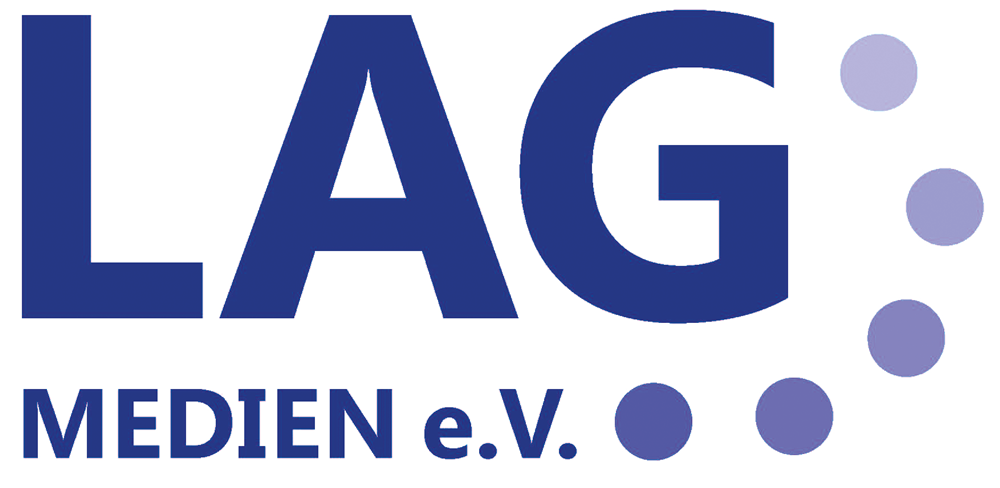P3 7-8/2023 en
“Employees wanted”
Appropriate Responses to the Paradigm Shift in the Labor Market
Management & Marketing

When companies formulate the job requirements for a new employee, they usually put their wishes or dreams for them on paper.
The shortage of skilled workers and managers will increase in the coming years. Companies therefore have to develop strategies for themselves in order to respond to the resulting challenges.
When companies formulate the job requirements for a new employee, they usually put their wishes or dreams for them on paper.
There is currently a shortage of workers in almost all professions - across industries and functions. All companies are complaining: Help, we are having more and more difficulty finding the specialists and managers we need. This is understandable, as members of the baby boomer generation are increasingly leaving the workforce. In concrete terms, this means: Due to the low number of young talent - without an effective immigration strategy - almost twice as many people will leave the labor market in the next few years as new ones will join it. Therefore, HR managers in companies have to prepare for a number of new challenges. Below are some tips on how to overcome this.
- The more suitable a position is filled, the less management effort is required. And vice versa.
Companies should be aware of:
- The larger the number of applicants for a vacant position, the higher the probability that there will be a person among them who fully meets the professional and personal requirements of the new employee. And:
- If a company finds such a person, it is spared a lot of effort that it would otherwise have to put into managing and developing the new employee.
Up until now, effective personnel selection was companies' “Plan A,” and over the years they have established sophisticated tests and systems that have proven to be effective in employee selection. These tools become less relevant when there are only one or two applicants at the door. Companies then have to expect higher costs for personnel development and management.
Prepare for a situation in which greater leadership effort is required and support your managers in further developing their skills in this regard.
- Say goodbye to the ideal image of the “jack-of-all-trades”.
When companies formulate the job requirements for a new employee, they usually put their wishes or dreams for them on paper. And this is not only reflected in their job advertisements; They also go into job interviews or personnel selection interviews with corresponding expectations. This is counterproductive in a labor market situation in which often, if at all, only two or three candidates apply for a position, because then among them there is rarely the “jack of all trades” that they dream of.
When formulating job requirements, make a clear distinction between must-have criteria, i.e. skills and characteristics that are non-negotiable, and should-have and nice-to-have criteria. And before the selection interviews, think about the conditions under which an applicant who does not meet all the requirements could potentially be an interesting employee. For example, if he attends another training course? Or if you slightly redesign the work processes? Or if you delegate certain tasks to colleagues or external service providers?
- Be visible and attractive as a potential employer
In the past, interested parties had to apply to employers for a position, but now it is often the other way around: companies have to apply to interested parties.
This means that they have to ensure that they are perceived as a potentially attractive employer. Be it by presenting themselves to potential offspring in (college) schools. Be it by having their company cars with an inscription like “Become a part of our team! Tel.: …”. Be it by presenting themselves on various social media depending on the target group and ensuring positive reviews on portals like Kununu. It is worth investing in a positive external image that is not purely cosmetic, but authentic and therefore attractive to the right people.
When it comes to external representation, you should keep in mind that this is not an end in itself. Rather, you want to address people
- who could be valuable employees for you and
- where you have a real chance of winning as such.
That's why, for example, for craft businesses and regional service providers who are looking for supporters, it is often more effective to be present on a portal like Nebenan.de from time to time than on a business portal like linkedIn.de. Or to be mentioned in a local advertising paper that every household receives rather than in magazines like Zeit or Spiegel.
- In addition to plan A, also have a plan B and C
In the near future, there is no guarantee that companies will be able to fill vacancies quickly and adequately. This process can take several months and, in extreme cases, the position remains unfilled.
If a replacement takes a long time, existing employees usually have to take on the tasks that are not being carried out. If this situation persists, this can lead to overwork-related absences and, in the worst case, even layoffs, which will tear further holes in the staffing level.
That's why you should always have a plan B and C if there are vacancies in your company. You should therefore consider possible interim solutions in the event that the position remains unfilled for a long period of time. Such an interim solution could be that your company temporarily no longer provides certain services to customers. Or that you temporarily bring external service providers on board or outsource certain subtasks. Or that you generally cooperate more closely with other companies in order to absorb bottlenecks and cushion peaks.
- Become faster and more flexible when selecting personnel
If you want to win people over, you have to show them that you are interested in them - through your behavior. Many companies don’t do this enough. That's why it's not uncommon for applicants who companies could actually win as colleagues to end up choosing other employers.
In this regard, many HR managers should rethink their behavior. For example, it should go without saying that if you have an interesting candidate on the hook who works for another company, you should meet them on weekends or late in the evening. Or that they even get in the car and drive to him or meet him halfway. In addition, if the personnel selection or hiring process takes longer, you should also call the hot candidate or have a video chat with him in order to... As a company manager or HR manager, you must always keep one thing in mind in the current labor market situation: The really good candidates almost always have several, if not many, options. Accordingly, you have to fight hard for her favor and her yes word.
- Adapt personnel policy to the needs of Generation Z
Recently, at a business meeting, a medium-sized entrepreneur who was already graying said half-seriously and half-ironically: “How beautiful our life used to be. Tens of applicants responded to each job advertisement and we were able to have them come to us and choose the one that suited us. And when it came to employment contracts, we could dictate the terms and conditions. And if they wanted to pursue a career with us, they first had to prove themselves or dance to our tune. Then they were promoted with the expectation that they would then demonstrate their gratitude – also known as loyalty – to us.”
These days are over, which many managers and entrepreneurs complain about. But do members of Generation Z, i.e. the young men and women born after 1995 who are increasingly entering the workplace, see it the same way? Probably not! They welcome the greater choice and influence they have.
One accusation that is often made against members of Generation Z is that they are less willing to perform. But is it really like that? Isn't it more the case that many small and medium-sized companies in particular can no longer set the bar for personnel selection as high as before because fewer people apply to them?
Our impression is that, in percentage terms, there are about as many high-performance job seekers in Generation Z as there were before. However, because the total number is much lower, companies today often have to make major concessions when it comes to the demands they place on employees. That's why in day-to-day business they are increasingly confronted with employees who, among other things, have lower self-motivation and therefore need more leadership.
But the needs of high-performing and willing young employees have also changed. They don't want paid work to dominate their entire lives. The so-called “work-life balance” is more important to them than to their parents. And because they have more job options, they are more actively demanding things like regular working hours, part-time work, the opportunity to work remotely or take a longer break. The same applies to the opportunities to advance professionally. Young people are less likely than their parents to wait for this to be granted to them; they actively demand it. And if they don't get it? Then they change employers more quickly.
Companies must adapt to these changing conditions. You have to ask yourself to what extent your HR policy as a whole corresponds to the expectations of your (future) employees - similar to how you do with your products when the needs of your customers have changed.
- Human labor is becoming more expensive, so it should be used more effectively
“The scarcer a good is, the more valuable and expensive it becomes.” Many entrepreneurs have painfully learned this business truism in recent years. This also applies to human labor. It will become increasingly expensive in the coming years due to its demographic scarcity. Take this into account in your business planning.
If a good is scarce and therefore expensive, it should be used sparingly or – in modern German – “resource-saving”. In this regard, look through your work processes and find out what savings opportunities in the area of human resources, for example, digitalization offers you.
- Train and develop the required workers yourself
An alternative to recruiting specialists and managers from the labor market is to train or develop them yourself. This involves effort, but can be an important contribution to problem solving in the medium to long term. If, for example, you train school leavers, they will be professionally socialized in your company. This means that, if they identify with them, they internalize your values, i.e. what is important to you. They also develop an emotional relationship with your company. It is therefore easy for you to bind them to your company after their training - at least if you also show them a medium to long-term perspective.
And another note: How often you have to fill a position also depends on how long employees stay in your company. If you regularly lose employees that you would like to keep for reasons you don't know, then there is probably something wrong with your company culture or human resources policy and management. So you should reconsider this.
12 tips for your future human resources policy
- When searching for personnel, clearly differentiate between the must-have, should-have and nice-to-have requirements that you place on new employees.
- Find out how you can make your personnel selection and hiring processes faster and more flexible.
- Allow for higher salaries for new hires.
- Rethink your human resources policy and develop attractive, target group-oriented additional offers in the area of remuneration and in work/contract structuring in order to attract employees.
- Plan more time for management tasks in your everyday working life.
- Support your managers in successfully dealing with the new challenges in human resources.
- Credibly improve your external image as an employer: Work more on your corporate culture than on nice marketing slides.
- If you can afford it, make sure you have a few more staff resources than absolutely necessary. Then you have a buffer in the event of illness, time off and absences and protect your employees from overload and burnout.
- Consider alternatives at an early stage if a position cannot be filled for a long time or at all.
- Determine how young people want to be led and support your managers in responding adequately to these expectations.
- Beware of cliché images such as “Generation Z is less productive”. Although Generation Z is different from the Baby Boomer generation, it is just as heterogeneous as them.
- Think about how you can use the expensive resource “human labor” as effectively as possible – for example, by standardizing and digitizing certain processes.
Klaus Doll is the owner of Klaus Doll Organization Consulting, Neustadt an der Weinstraße (www.doll-beratung.de). His wife Nikola Doll works as a business coach, particularly for small and medium-sized companies. Together they regularly hold a “change workshop – to go” in which they work with managers and entrepreneurs to develop solutions to acute operational problems.








